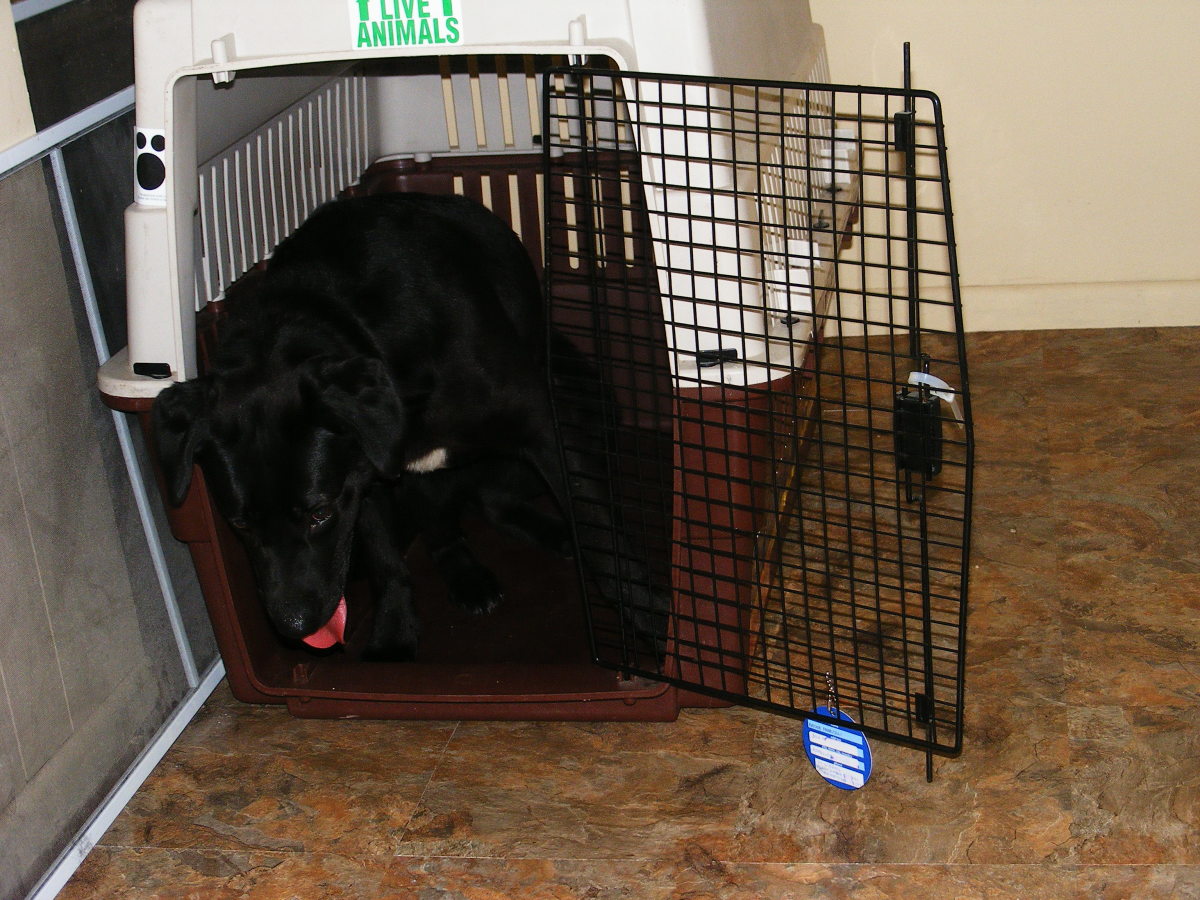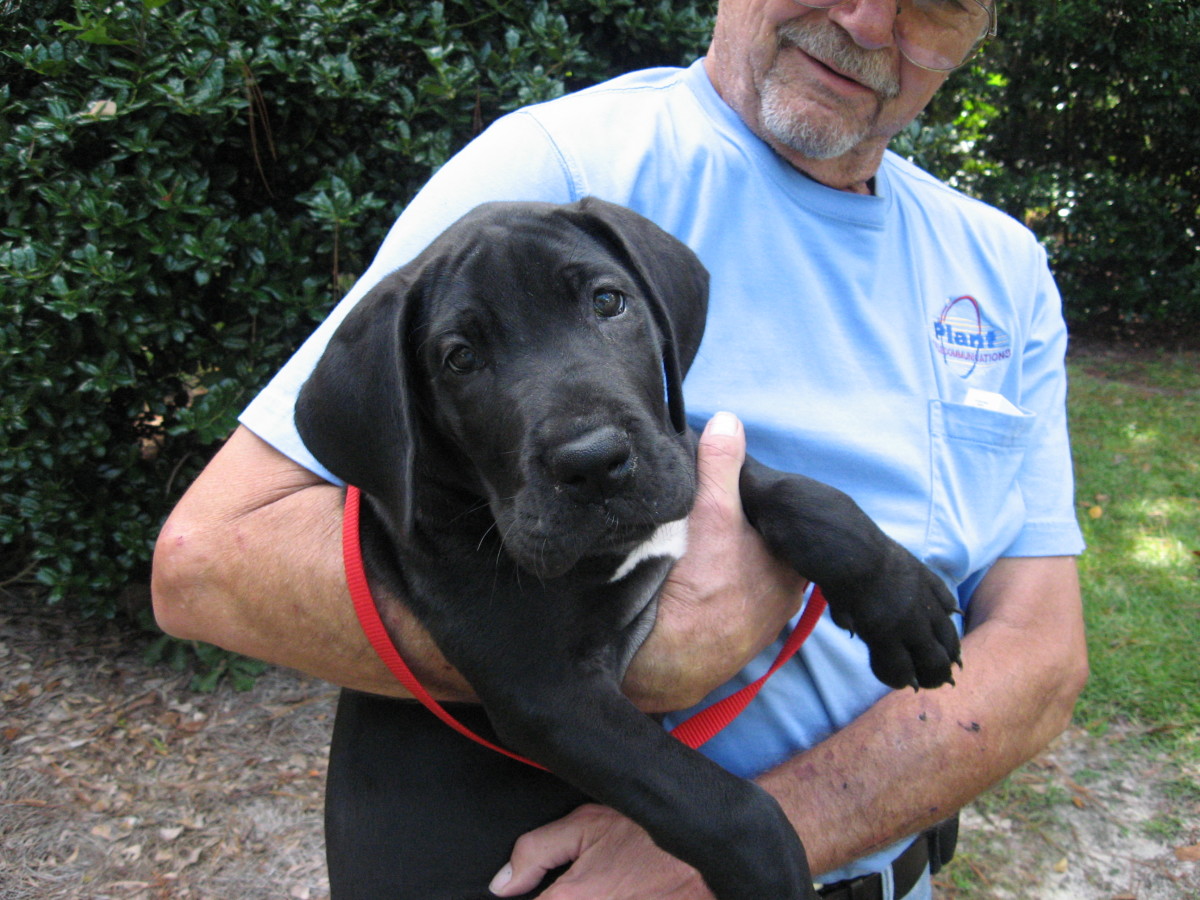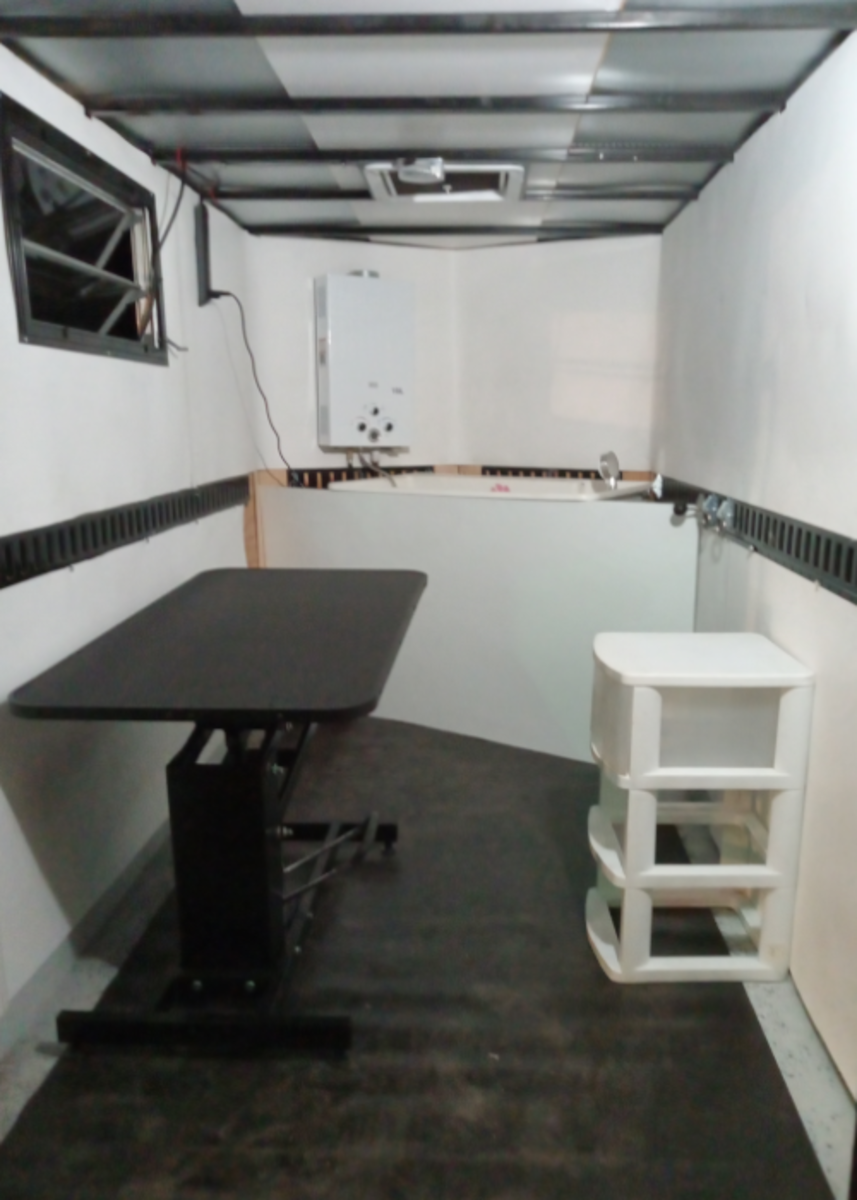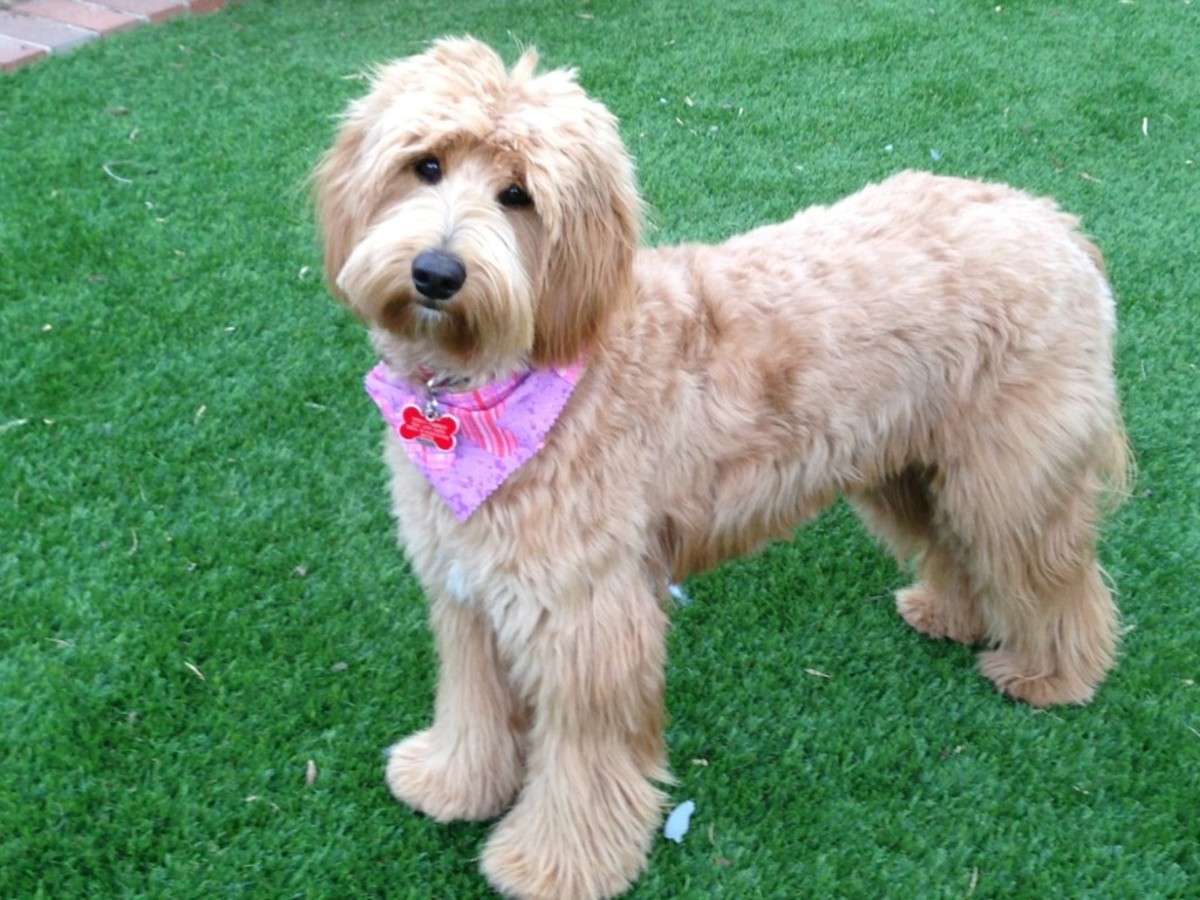The Good Dog and Apartment Life - Crate Training
Crate training is primarily used when potty training a dog. It has many other applications through all stages of the dog's life and I highly recommend it. Is it necessary? No, but it will make life a whole lot easier. Crate training will save you a lot of time spent on cleaning up messes as well as money on paper towels and repairs. When you're in an apartment this is especially important because the carpet and building are not yours. You will lose your deposit and could end up paying more when you move out if there is significant damage to the building and carpet.
Crates come in a variety of materials, sizes, and types. The majority of the crates I have seen are either a solid plastic construction, or a metal bar open design. There are also nylon or "soft" crates and other types of crates that are designed with more specific purposes in mind. As always there are pro's and con's for all the designs. I'll leave the specific descriptions and pictures to the ads and reviews that hopefully pop up here. I will go over the 3 types I mentioned as a general introduction.
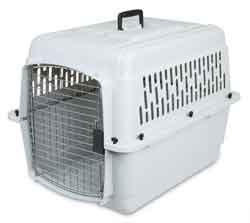
The solid plastic construction is the type that Jenna and I prefer. It offers a very good "den-like" atmosphere because the walls are solid. Because the plastic is very strong it is able to have stuff on top of it, this makes it excellent for packing and traveling in the back of an SUV or Van. It also makes a great extra shelf when space is limited in an apartment ;). The plastic construction is also required by most airlines for flying. The solid plastic walls also offer the most protection from car wrecks, other animals, and people. These crates also trap the most heat which can be a good and bad thing depending on the circumstances. The limitations are ventilation and packing space. The crates are usually designed well to allow adequate ventilation but they don't compare to the air flow of the metal barred variety. The ventilation can also become an issue if it is packed with stuff around it blocking the holes. They also take up a good amount of space. The metal and soft crates usually can be folded almost flat. These can be broken in half and stacked for storage but they are still somewhat awkward. The large ones don't fit well in small vehicles like ford escorts or jeep wranglers as we have.
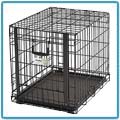
The metal crate has excellent visibility for both the dog and owner who wants to keep an eye on the dog's behavior. It offers the least "den-like" atmosphere on its own. It offers little protection from the weather. These issues can be remedied by placing a blanket or other material, like a tarp, over the crate. The bar design offers adequate protection from wrecks, animals, and people, but not as much from animals and people as the solid plastic design. The metal material is the most resistant to scratches and chewing. Most of these also have a metal tray which slides out for easy cleaning. As mentioned before, most of these will fold flat for storage or packing. They have the most ventilation of the three. This design also has the least amount of heat retention. They typically aren't allowed on airlines and are the heaviest of the three designs.
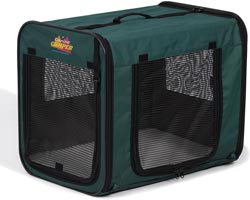
The third type, the "soft" crate offers a bit more variety for small to medium sized dog owners. They are made from a variety of materials from nylon to wicker. They are the least durable of the three varieties. They are not suitable if your dog chews or digs at the crate as they will be quickly destroyed. They are the lightest and easiest to haul around with you on a day to day basis. They also typically offer a good den-like atmosphere. You cannot stack stuff on top of them, but they fold easily for storage. They offer the least amount of protection from a wreck, people, or animals. They usually have good ventilation and some can offer good protection from the elements.
What is Crate Training?
The idea of crate training is this; dogs instinctively will not go potty where they sleep. You leave your dog in the crate for significant amounts of time when starting this training. The time will vary depending on the age of the dog. A good rule of thumb that worked great for me and Jenna was however many months old the puppy is, that is the amount of time in hours they can hold it. In other words, a 3 month old puppy can hold it for about 3 hours and that's the max. At that time you take your dog out to a consistent spot in the grass outside your building to relieve themselves. When they do praise them, pet them, give them a treat. Make it a memorable and happy moment. The more consistent you are, the faster they will learn. By doing this the puppy (works for adults too) learns that the spot in the grass outdoors is the potty spot and the crate is not. It's also important to make sure the crate is the correct size. To big and the pup will find a corner and go in the crate. The crate should be big enough for the pup/dog to stand up, turn around, and lay down; no larger.
You gradually let your puppy out for longer periods of time to play and explore the apartment, always keeping a close eye on it for signs of needing to go potty. Maintain your clock schedule of potty breaks and make sure to take them out consistently to the same spot. It doesn't hurt to take them out early, but it does hurt to take them out late! Make sure your still praising them. Even at a year old Zoe gets the occasional pet or a "good girl" when she goes potty outside when we want her to. By doing this they are learning that the apartment is an extension of the crate and not to be soiled; outside is still the place to relieve themselves. There are going to be accidents, that's ok. Just make sure there are more successful moments than accidents. Your trying to create a routine for the puppy. Dogs love routine and will do their best to follow it. You want the routine to be going outside, not in the house.
There are many many other uses for the crate. Let me take this opportunity to say that the crate should NEVER be used as a punishment. What I mean is that if the dog has an accident, bites, chews something, anything, do not use the crate to separate them and punish them. When you do they will start to associate the crate with punishment, with bad feelings, and letting down their owner and they won't want to go in it. You want the crate to be a happy place, a place of comfort and safety, not of anger and frustration. Jenna and I taught Zoe to love her crate by giving her a treat every time we put her in it. Zoe slept in her crate right next to our bed and we would just let it sit right next to the couch with us when we watched tv. By doing this Zoe feels comfortable and normal when she's in the crate. Being in an apartment is great for crate training because it is small. This close living space means that your dog typically isn't very far from you and is that much calmer. When the dog's crate is in the garage or some other isolated room it's much harder to teach them to enjoy their crate.
You want this crate to be a comfort zone because you can then leave them in it without feeling bad that they are miserable when you go to work. They will just sleep comfortably, eagerly awaiting your return. When they are in their crate you are keeping your apartment protected from any destruction your dog may inflict out of boredom or anxiety.
Another key use of the crate is for traveling. Once your dog becomes accustomed to the crate it will make an excellent travel tool. If you fly, and take your dog, it will have to be in a crate. The dog will be stressed enough with flying. It will be far better off if it is comfortable in the crate rather than hating it, or just not accustomed to it. Another incredibly important travel application is as a car restraint. When you are traveling with your dog in the car it is very easy for an unrestrained dog to go flying and injure itself, you, or cause an accident. It doesn't take much, a simple hard brake from a quick light change, someone cutting you off, missing a turn or trying to make a turn, all of these can turn very quickly into disaster. Unrestrained pets cause more than 30,000 accidents annually according to the AAA. Your furry friend needs to be restrained while in the car just like you. I use a dog harness which I will talk about in my hub that I write on camping, but a crate is a great 2nd option.
You can also use the crate as an excellent tool in early dog socialization. What you do is leave your dog in the crate when introducing them for the first time. By doing this the dogs become accustomed to one another much easier. You are calmer because you have no fear of anything happening. Your puppy/dog feels secure because you are calm and it knows the scary dog outside can't harm it. The dog outside gets to smell your dog and get used to its presence. Now you should only use it as an introductory agent and not as the end all means of socialization. Eventually your dog needs to come out of the crate ;) but as a first introduction it's a great way to keep nerves calm and meet peacefully.
With all of these uses I hope that I've made it clear just how important and useful it is to get your dog acclimated to using a crate. The benefits a crate can offer are great, while the costs of not using one can be very very high. They are not harmed at all in the process if it is done correctly and with love.

